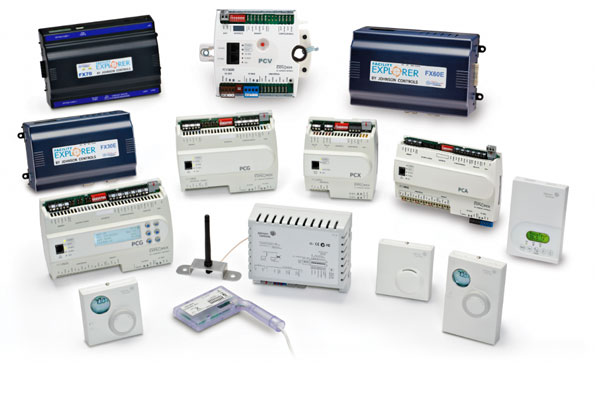1. EXECUTIVE SUMMARY
-
CVSS v3 7.4
- ATTENTION: Exploitable remotely
- Vendor: Johnson Controls
- Equipment: Facility Explorer
- Vulnerabilities: Path Traversal, Improper Authentication
2. RISK EVALUATION
Successful exploitation of these vulnerabilities could allow an attacker to read, write, and delete sensitive files to gain administrator privileges in the Facility Explorer system.
3. TECHNICAL DETAILS
3.1 AFFECTED PRODUCTS
Facility Explorer leverages Tridium Niagara technology, which is affected by these vulnerabilities. The following versions of Facility Explorer are affected:
- Versions 14.x prior to 14.4u1, and
- Versions 6.x prior to 6.6
3.2 VULNERABILITY OVERVIEW
3.2.1 IMPROPER LIMITATION OF A PATHNAME TO A RESTRICTED DIRECTORY (‘PATH TRAVERSAL’) CWE-22
A path traversal vulnerability exists that an attacker could exploit, in certain circumstances, using valid platform (administrator) credentials to access a file or directory outside of the restricted location.
CVE-2017-16744 has been assigned to this vulnerability. A CVSS v3 base score of 6.6 has been calculated; the CVSS vector string is (AV:N/AC:H/PR:H/UI:N/S:U/C:H/I:H/A:H).
3.2.2 IMPROPER AUTHENTICATION CWE-287
In certain circumstances, an attacker could log into the local Facility Explorer platform using a disabled account name and a blank password, gaining administrator access to the Facility Explorer system.
CVE-2017-16748 has been assigned to this vulnerability. A CVSS v3 base score of 7.4 has been calculated; the CVSS vector string is (AV:L/AC:H/PR:N/UI:N/S:U/C:H/I:H/A:H).
3.3 BACKGROUND
- CRITICAL INFRASTRUCTURE SECTORS: Critical Manufacturing
- COUNTRIES/AREAS DEPLOYED: Worldwide
- COMPANY HEADQUARTERS LOCATION: Ireland
3.4 RESEARCHER
Tridium reported these vulnerabilities to Johnson Controls; Johnson Controls notified NCCIC.
4. MITIGATIONS
Johnson Controls has mitigated these vulnerabilities in the following versions. Users should upgrade to one of these product versions (FX14.6 recommended):
- Facility Explorer 14.6 (released September 2018)
- Facility Explorer 14.4u1 (released August 2018)
- Facility Explorer 6.6 (released August 2018)
For more information, please refer to Johnson Controls Global Product Security at https://www.johnsoncontrols.com/buildings/specialty-pages/product-security or send an email to productsecurity@jci.com
Johnson Controls Services and Support: https://www.johnsoncontrols.com/buildings/hvac-controls
NCCIC recommends users take defensive measures to minimize the risk of exploitation of this vulnerability. Specifically, users should:
- Minimize network exposure for all control system devices and/or systems, and ensure that they are not accessible from the Internet.
- Locate control system networks and remote devices behind firewalls, and isolate them from the business network.
- When remote access is required, use secure methods, such as Virtual Private Networks (VPNs), recognizing that VPNs may have vulnerabilities and should be updated to the most current version available. Also recognize that VPN is only as secure as the connected devices.
NCCIC reminds organizations to perform proper impact analysis and risk assessment prior to deploying defensive measures.
NCCIC also provides a section for control systems security recommended practices on the ICS-CERT web page. Several recommended practices are available for reading and download, including Improving Industrial Control Systems Cybersecurity with Defense-in-Depth Strategies.
Additional mitigation guidance and recommended practices are publicly available on the ICS-CERT website in the Technical Information Paper, ICS-TIP-12-146-01B–Targeted Cyber Intrusion Detection and Mitigation Strategies.
Organizations observing any suspected malicious activity should follow their established internal procedures and report their findings to NCCIC for tracking and correlation against other incidents.
No known public exploits specifically target these vulnerabilities. High skill level is needed to exploit.
Source:
https://ics-cert.us-cert.gov/advisories/ICSA-19-022-01
